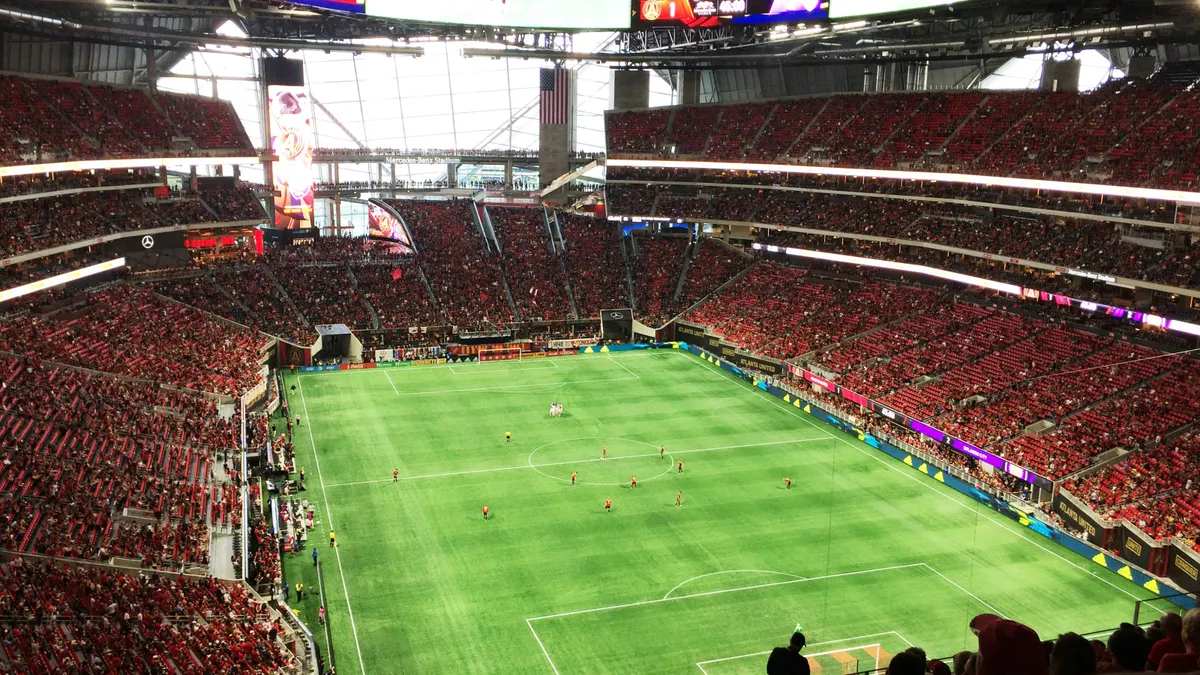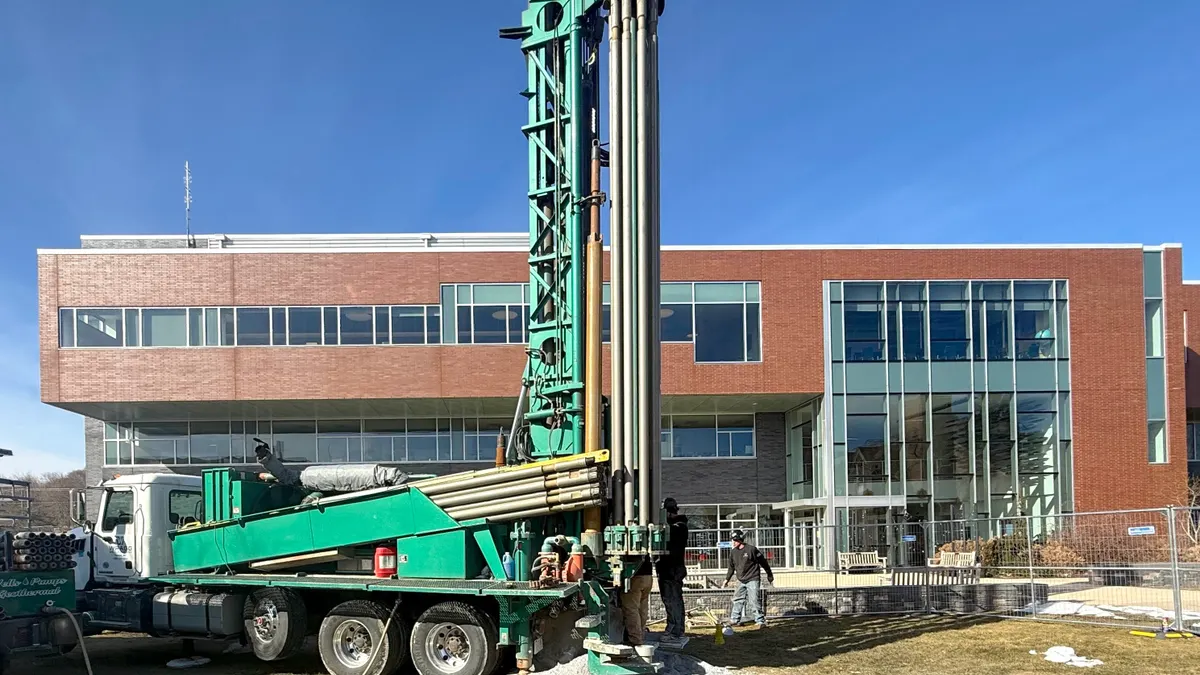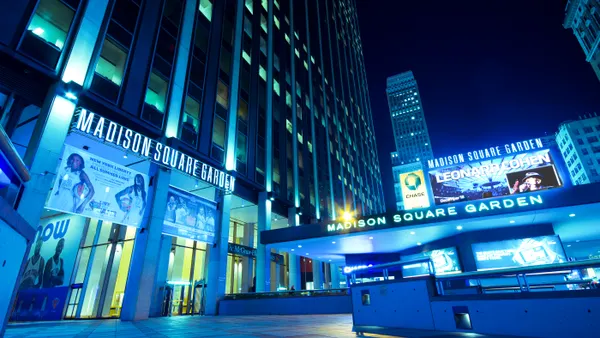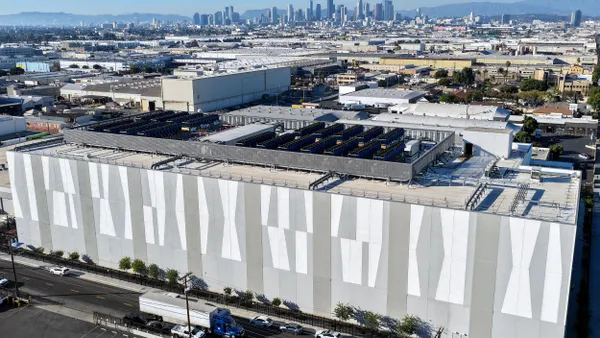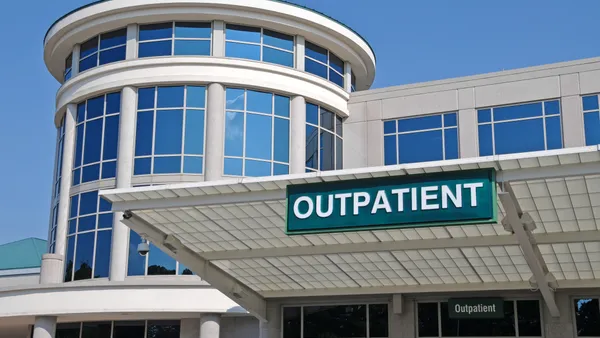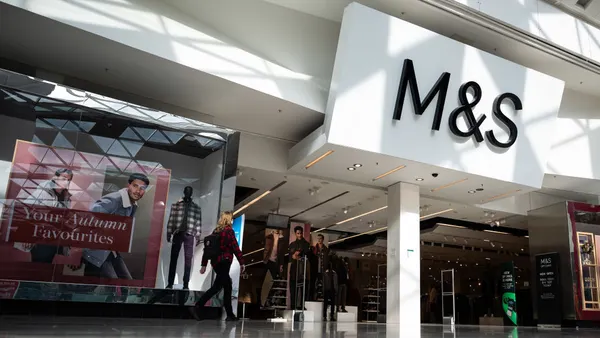By the time the 2026 World Cup takes place next June, facility managers will have removed or covered thousands of branding elements in more than a dozen stadiums across North America.
Soccer’s international governing body, the Fédération Internationale de Football Association, or FIFA, prohibits corporate branding at host stadiums for the five-week-long tournament. That means anything with a commercial name on it –— stands, scoreboards, seats, clocks, staff uniforms and fences, among other things — must be redone before the first ball is kicked.
“It’s quite the task — pretty Herculean to be honest,” Drew Bryant, chief creative officer at Elevate, told Sports Business Journal, which took a deep dive into the “debranding” FIFA requires of participating stadiums.
For a major venue like Mercedes Benz Stadium, the 71,000-seat arena in Atlanta, debranding means removing or covering some 2,000 elements over the coming months.
“Stadium owners have promised to turn their venues over to FIFA ‘free and clear of any and all advertising, marketing, promotion, merchandising and brand identification,’” the SBJ report says.
Stadium names won’t be spared. As part of its effort to maximize sponsorship revenue, FIFA is requiring all of the participating stadiums that have corporate names to hide them so it can offer World Cup sponsors a clean slate for promoting their brands.
“If they told Hyundai-Kia that they would be playing in and talking about Mercedes-Benz Stadium, Hyundai-Kia wouldn’t have paid what they paid,” Ricardo Fort, founder of Sport by Fort Consulting, said in the SBJ report. “And that goes for every brand.”
Sponsorship rates are $100 million to $200 million, according to the report. Of the 16 participating stadiums, spread throughout the United States, Canada and Mexico, all but one have corporate names. That means Mercedes-Benz Stadium will become Atlanta Stadium, MetLife Stadium will become New York New Jersey Stadium and SoFi Stadium will become Los Angeles Stadium. BC Place in Vancouver is the one stadium that won't have to change its name.
For the half dozen stadiums that have aerial-shot branding — names or logos on their retractable roofs or elsewhere that’s intended for aerial shots — the cost of hiding that branding is expected to be high. City officials in Atlanta, which owns Mercedes Benz stadium, have asked FIFA to consider a virtual solution in which production staff would use digital tools to cover the car maker’s logo on the stadium’s retractable roof so it wouldn’t be visible in aerial shots. But the governing organization said that kind of solution wouldn’t be reliable, the report says.
As an alternative, officials are looking at covering the logo with vinyl, in what Adam Fullerton, vice president of stadium operations at Mercedes-Benz Stadium, called an expensive solution. “That would be a problem,” he said.
The burden on newer venues like SoFi Stadium is expected to be lighter because much of the branding is digital.
“One of the great things about SoFi stadium and our design is we were very intentional about creating the LED opportunities we have,” Otto Benedict, senior vice president of facilities and campus operations at Hollywood Park, which includes SoFi Stadium, said in the report. “That allows us to go from a Chargers game to a Rams game to a concert without a lot of branding. For us, the lift is not as heavy as it is with other stadiums.”
But for older stadiums, much of the branding is physical. “Some stadiums will have more than 2,000 individual items that need wrapping,” the report says.
The host committee in Houston, which owns NRG Stadium, has budgeted more than $1 million to meet FIFA's guidelines, according to the report.


